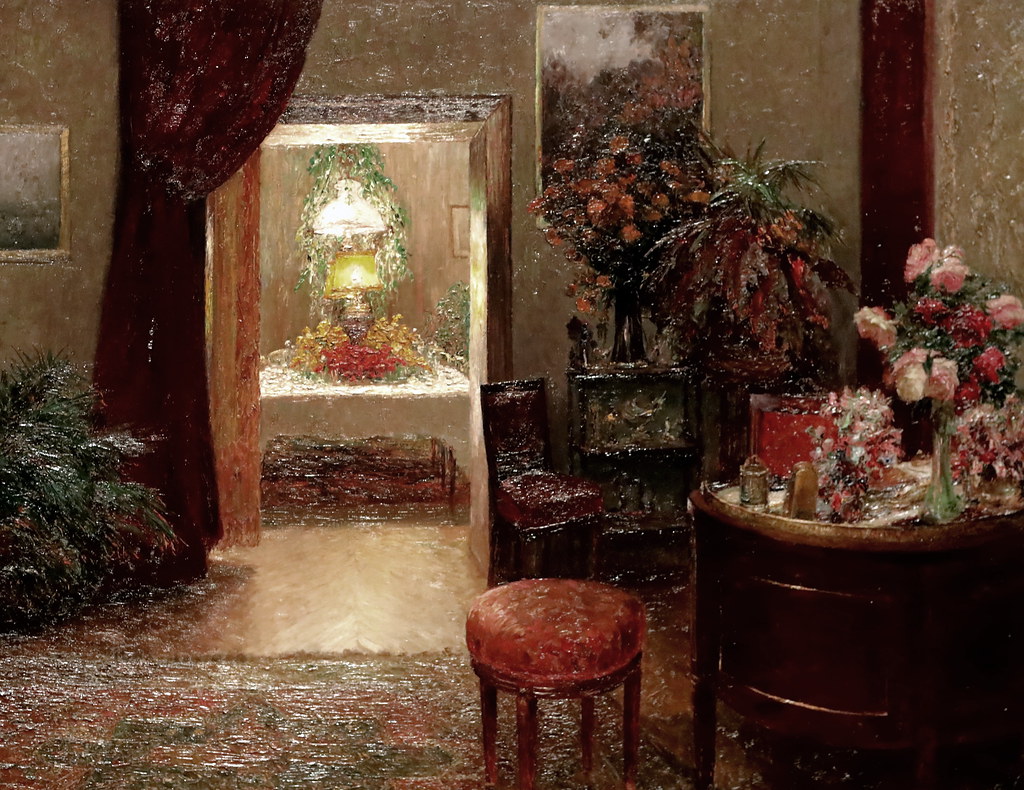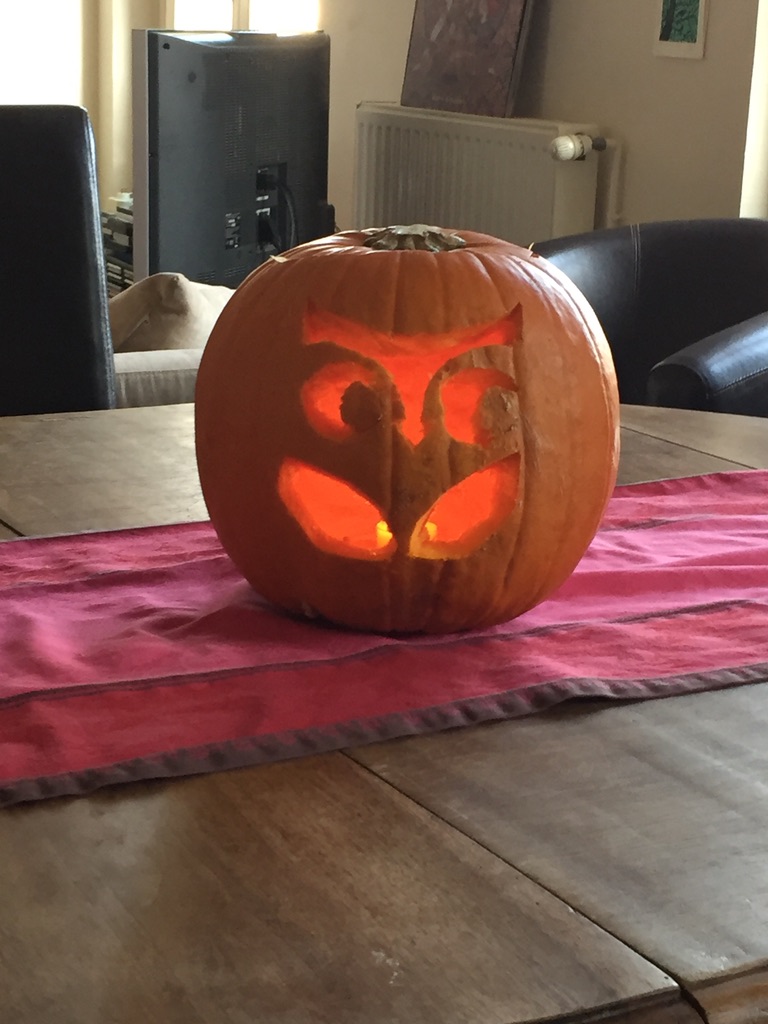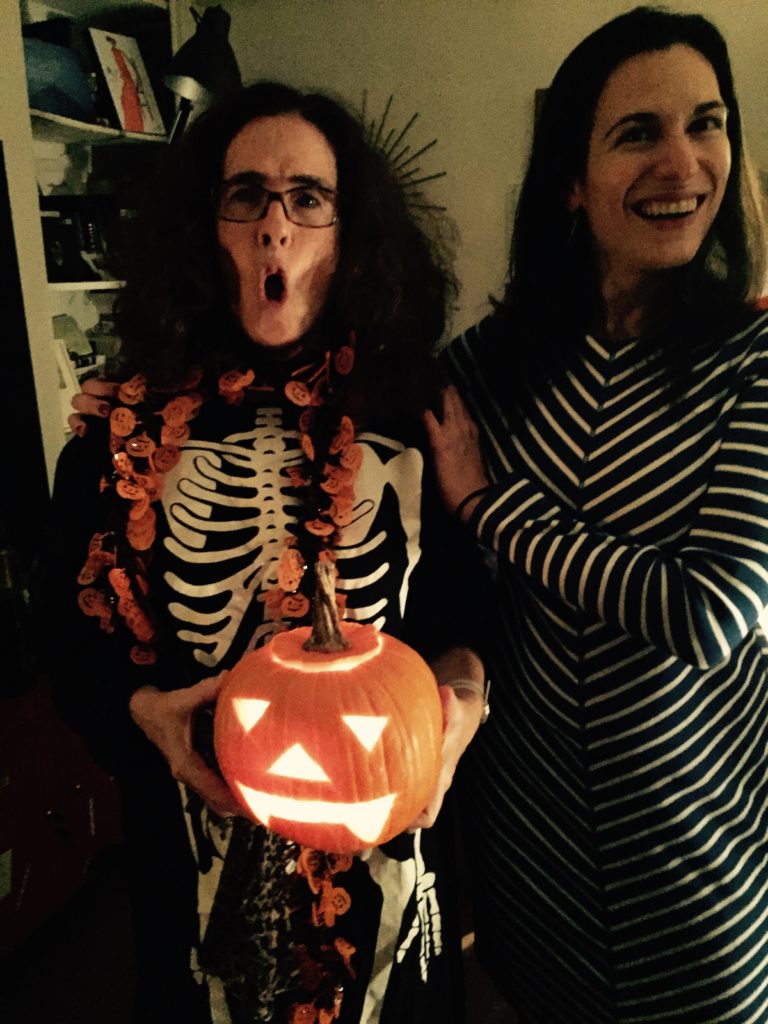 omeone asked me what I miss about France in October, and the answer was la Toussaint.
omeone asked me what I miss about France in October, and the answer was la Toussaint.

Back in history, this feast day honoring all the saints used to be held in the spring, after Easter, but then the Catholic Church had an idea. The first of November was a “pagan” feast day, celebrating the Celtic New Year, called Samhain. It was also the time of the potato harvest when many students missed classes to help with the harvest. So a potato holiday was invented, lasting about two weeks, during which time the first of November fit nicely. And so the feast day was moved from 13 May to 1 November. These events, a school holiday (where are the potatoes?) and a religious feast day are celebrated in France to this day. (What happened to Samhain? I think that was the point.)
The above was adapted from © French Moments Ltd. Read more
https://frenchmoments.eu/all-saints-day-in-france-la-toussaint/#The_origins_of_Toussaint_in_France
HALLOWEEN?
Well, not exactly.
The eve of la Toussaint, 31 October, is also a time of prayer. Most holidays in France have what is called la veille associated with it, translated usually as the evening before. La veille de la Toussaint shares the magic with the day itself. Why is this important? Well, it knocks out Halloween.
Unless, however, you are an expat and bring Halloween to the front, getting rid of this la veille business. It is, perhaps, une vieille idée anyway, an old idea, as in outmoded although not without its charms, but certainly not as charming as Halloween.
ASIDE 1

Some of the charm of Halloween includes the lovely fall that we experience in the northeast. This year, the leaves are turning slowly enough that you can watch a tree move into its glory, in this case from right to left, half red, half green still.
ASIDE 2
To pronounce “eve” or la veille, it’s like the “vey” in “oy-vey” a Yiddish phrase expressing dismay in a slightly humorous way. Now “old,” vieille is pronounced by saying the name of the letter “v” and adding “ay”. Notice how close in spelling the two words are. (A little word play going on? Yes! A la francaise.)
WHERE DID HALLOWEEN COME FROM ANYWAY?
Let’s look at The Legend of “Stingy Jack.” Here’s what the history website has to say:
“People have been making jack-o’-lanterns at Halloween for centuries. The practice originated from an Irish myth about a man nicknamed ‘Stingy Jack.’ According to the story, Stingy Jack invited the Devil to have a drink with him. True to his name, Stingy Jack didn’t want to pay for his drink, so he convinced the Devil to turn himself into a coin that Jack could use to buy their drinks. Once the Devil did so, Jack decided to keep the money and put it into his pocket next to a silver cross, which prevented the Devil from changing back into his original form.

“Jack eventually freed the Devil, under the condition that he would not bother Jack for one year and that, should Jack die, he would not claim his soul. The next year, Jack again tricked the Devil into climbing into a tree to pick a piece of fruit. While he was up in the tree, Jack carved a sign of the cross into the tree’s bark so that the Devil could not come down until the Devil promised Jack not to bother him for ten more years.
“Soon after, Jack died. As the legend goes, God would not allow such an unsavory figure into heaven. The Devil, upset by the trick Jack had played on him and keeping his word not to claim his soul, would not allow Jack into hell. He sent Jack off into the dark night with only a burning coal to light his way. Jack put the coal into a carved-out turnip and has been roaming the Earth with it ever since. The Irish began to refer to this ghostly figure as ‘Jack of the Lantern,’ and then, simply ‘Jack O’Lantern.'”
https://www.history.com/news/history-of-the-jack-o-lantern-irish-origins
EXPAT TEACHER HALLOWEEN
Something French families do, in common with Mexican families, is to visit the graves of their departed family members on the first of November. One strange thing (among many) about living in a foreign country is that I did not attend many funerals. Memorial services, yes, but I didn’t attend any internments in the cemetery. I wasn’t able to attend funerals in the states, either, wakes and burials of people whom I loved and knew throughout my childhood, for example, because it was too far. And, in fact, being a part of people’s lives even in their grieving was one of the things that motivated me to return home.
So left to their own devices, expat teachers become text book cases of bringing one culture to another. For us, Halloween is not so much about going to family grave sites, it’s more about the child-centered holiday that America loves.
The first strategy for expat teachers celebrating Halloween begins the week before the holiday, which is, shall we say, a lively week. Students are a cross between anticipatory and exhausted, which manifests itself in hyper-activity. A whole school with its students manifesting ADD (Attention Deficit Disorder). Many movies are shown throughout the classrooms as a flag of surrender to this impossibility of concentrating. I had a class of incorrigible freshmen, a class that we still talk about, although they have now gone on to bother their instructors of higher education. Even they responded to this movie I love, which is Tim Burton’s Corpse Bride, based on a Russian fairytale.

The second strategy is to plan a lovely holiday in the north of France with favorite colleagues and favorite dogs. This involves lots of outside air, hiking, walking, the sea, an excellent way to regroup and to energize for the next school push, which is up to Christmas. (I hate to even mention the word Christmas in a post about Halloween, given the way the Americans think the two are really one big merged holiday, but there it is.)
Or go to a party. Here is yours truly imitating Edvard Munch’s painting, “The Scream,” with friends keeping an eye on me at a party in Paris.

GODOT
I can see the two gentlemen at the potato harvest, pocketing a few potatoes, like they do their vegetables in the play. You may remember that Estragon is suddenly quite hungry. Vladimir offers him a carrot, and when Estragon complains, says that he might have a turnip. Estragon chooses a carrot, receives a turnip, and finally receives the last carrot. When Valdimir asks if it’s good, Estragon replies, “it’s a potato. (Just kidding.) He says, “it’s a carrot.” And his friend remarks, “so much the better, so much the better.” I’m trying to draw a line to potatoes, and the best I’ve got is root vegetables!
Well, saints, potatoes, a new year–perhaps this layering of traditions, which form the French holiday la Toussaint, is something that inspired Beckett, another expat, and like me, something he missed when he left France to visit Ireland.